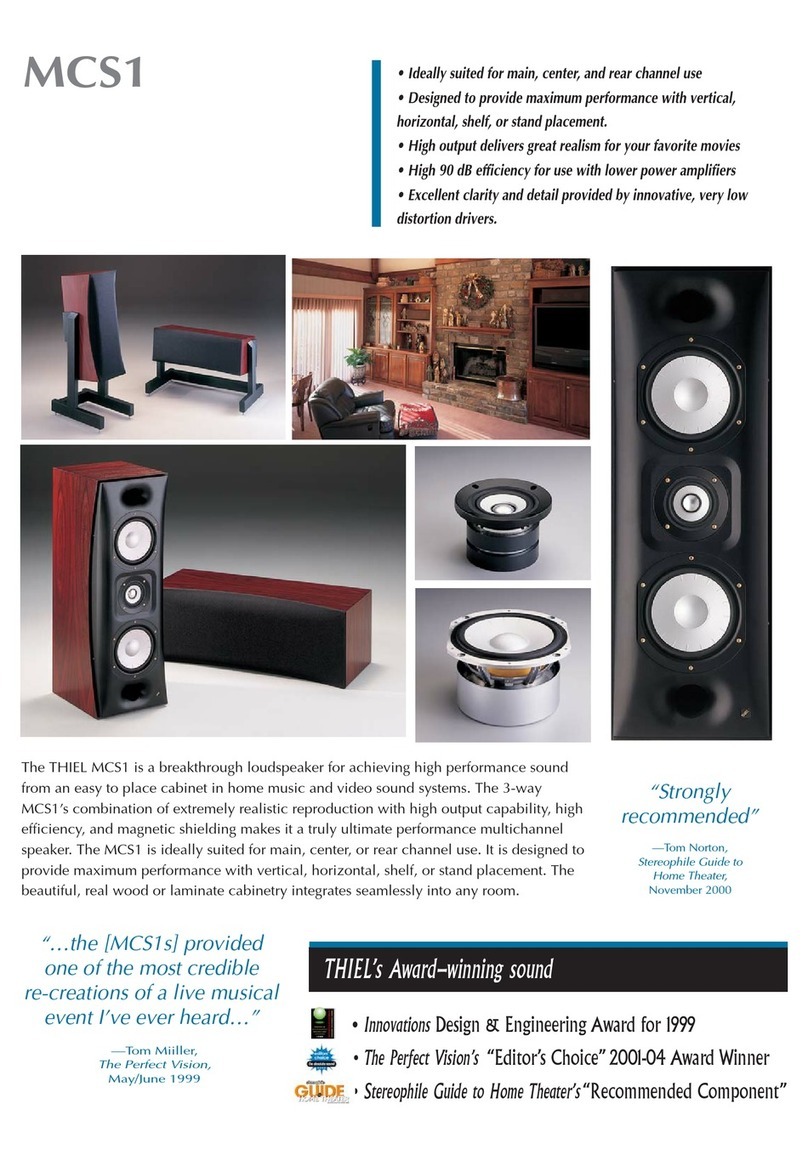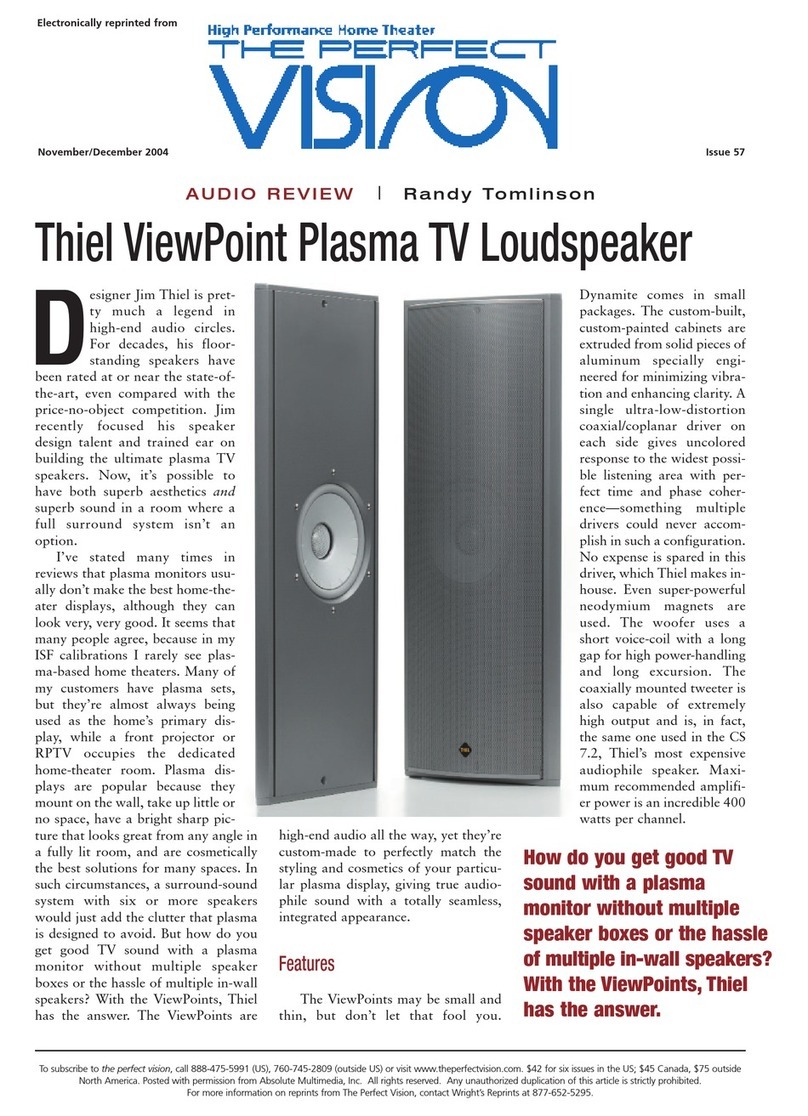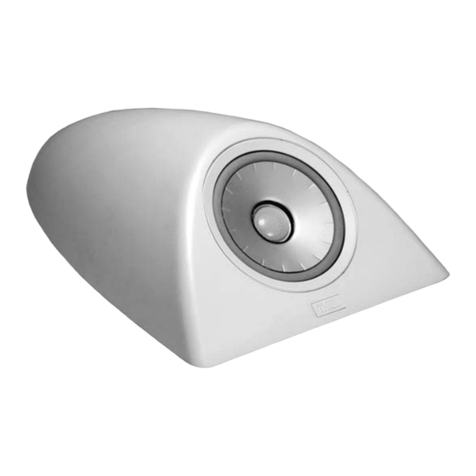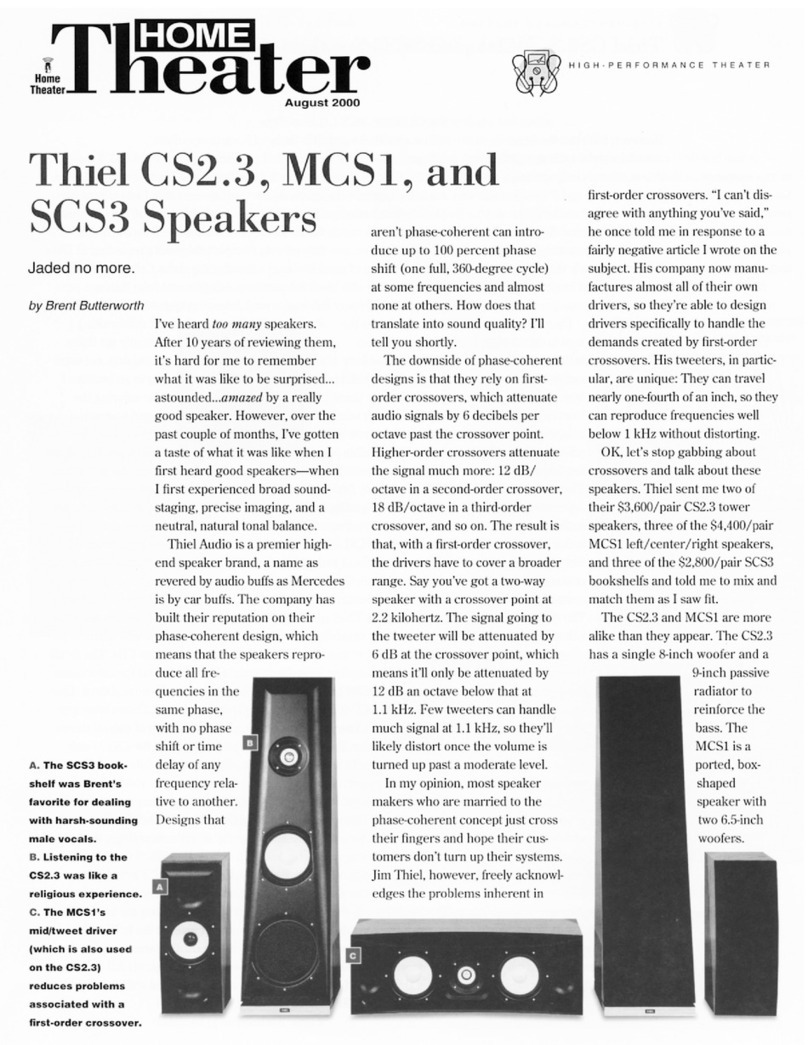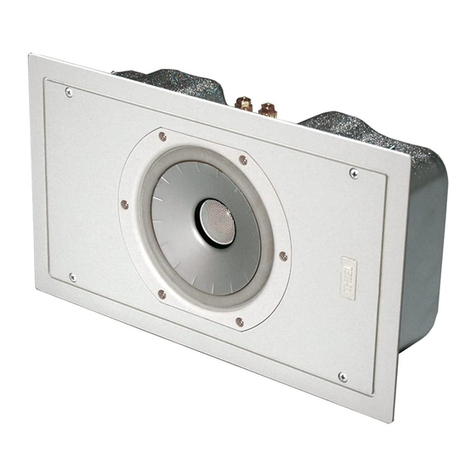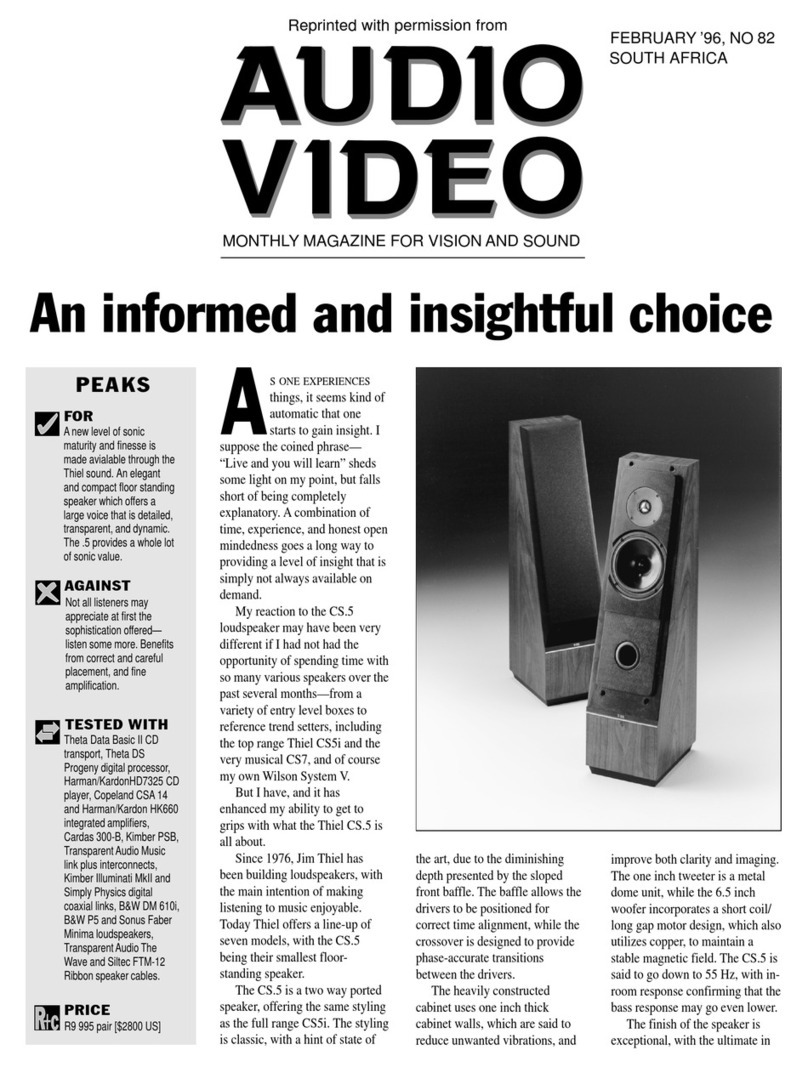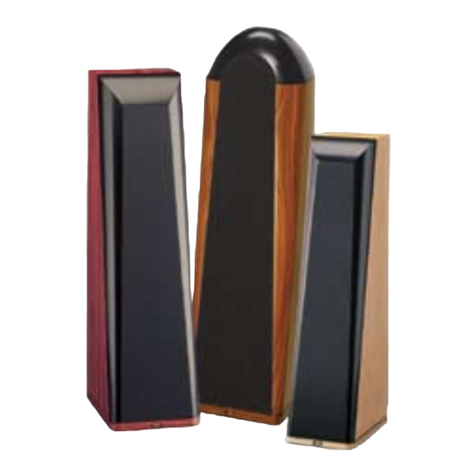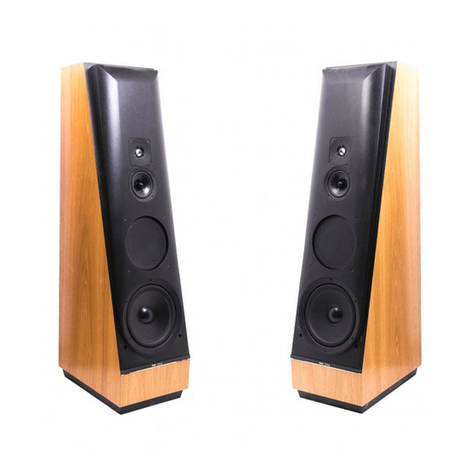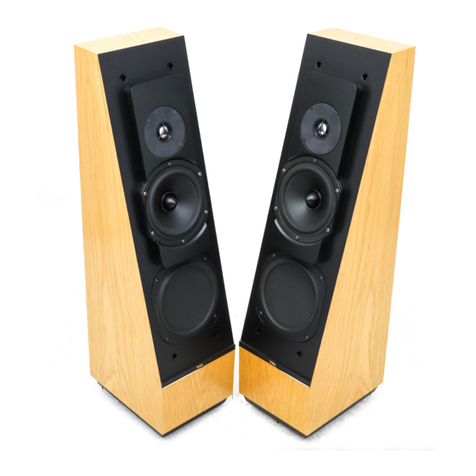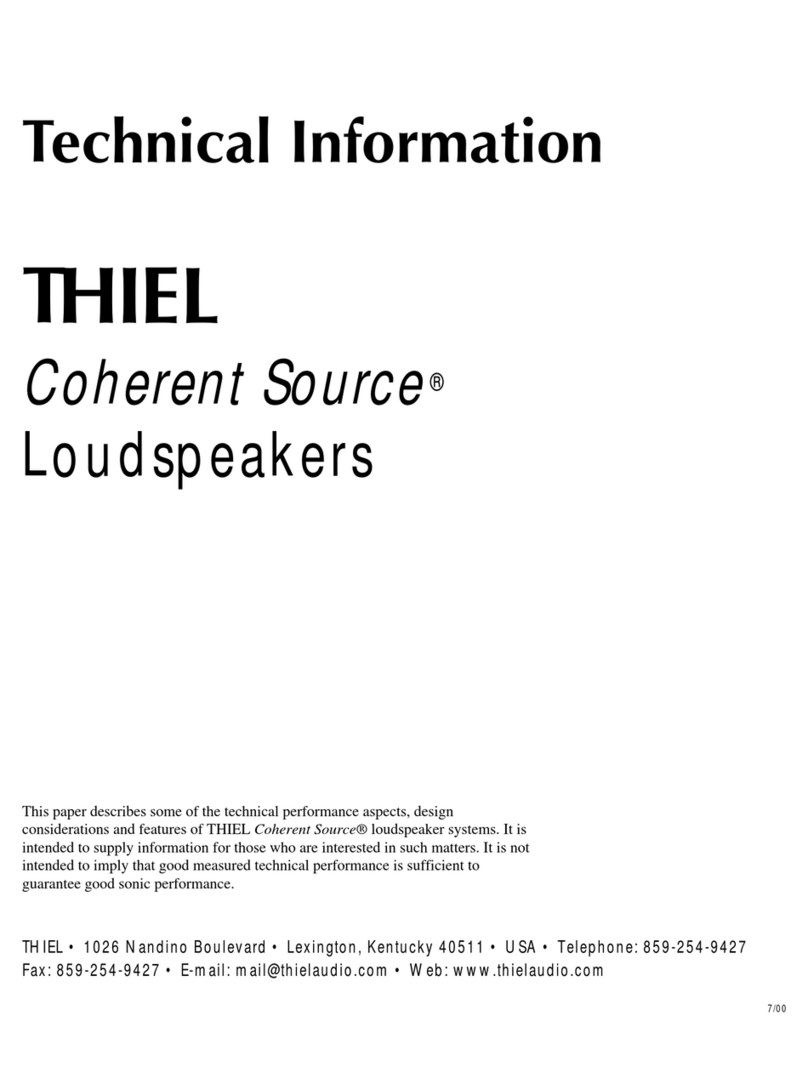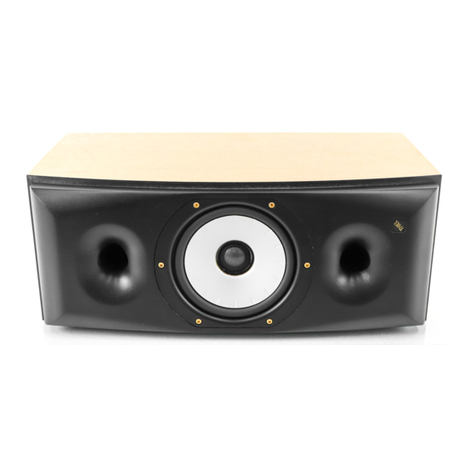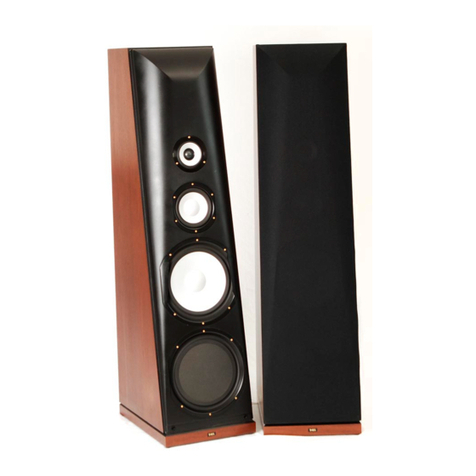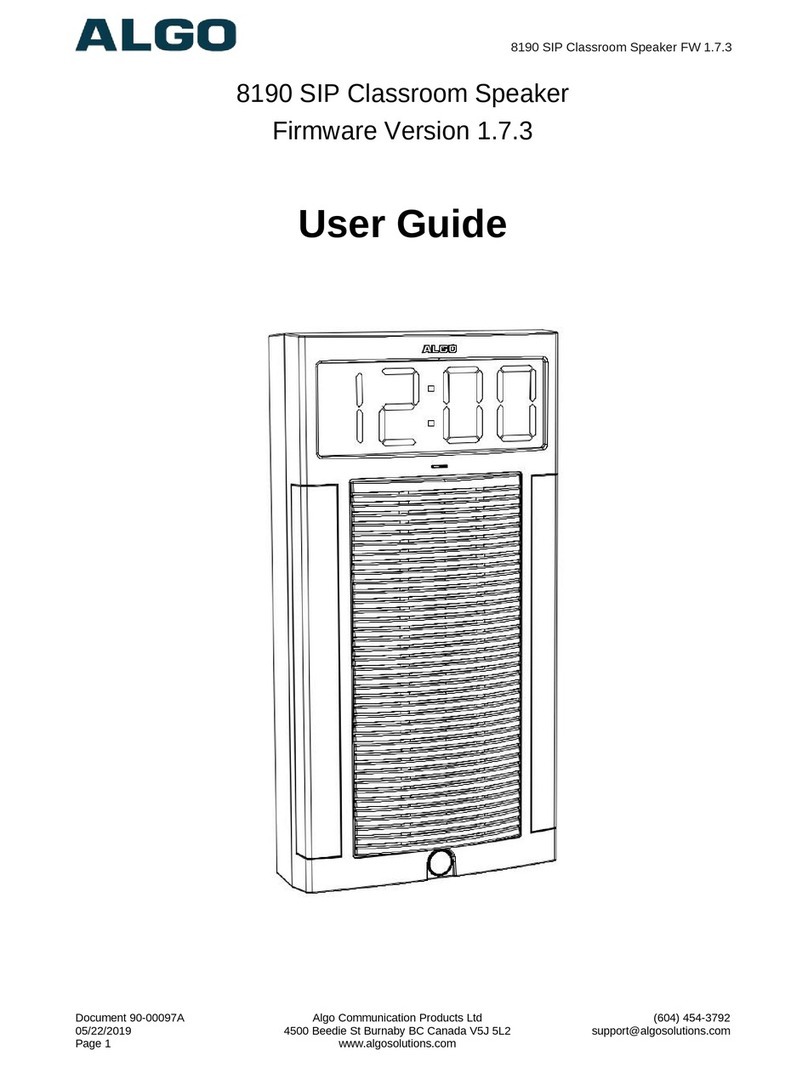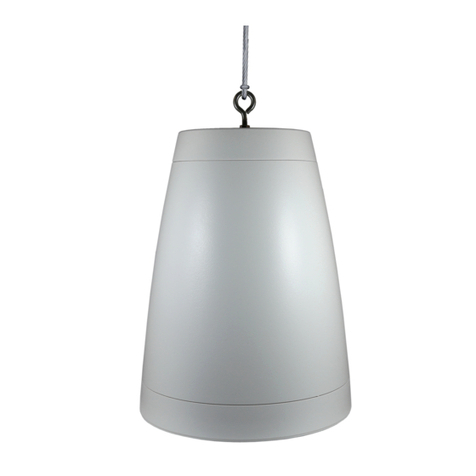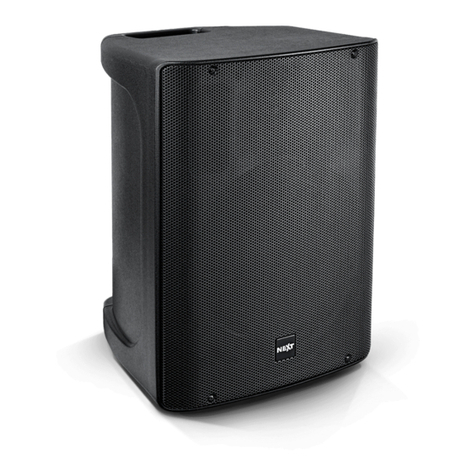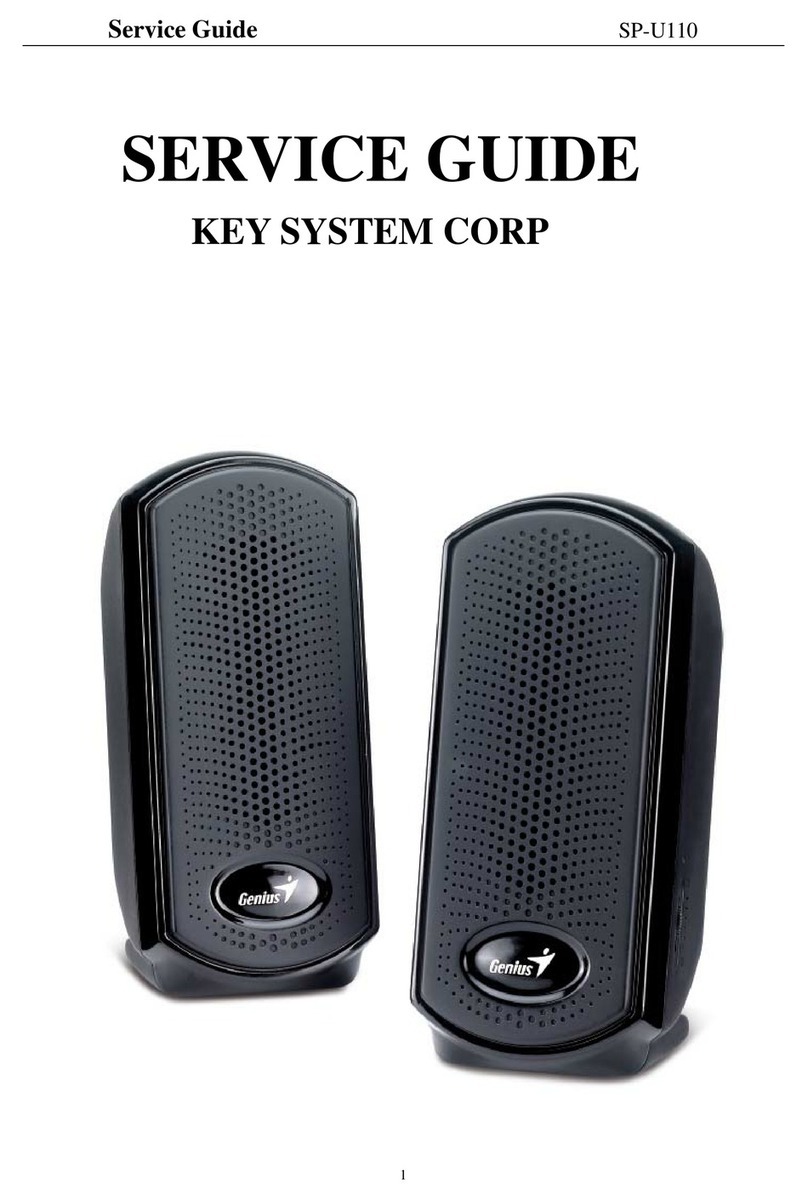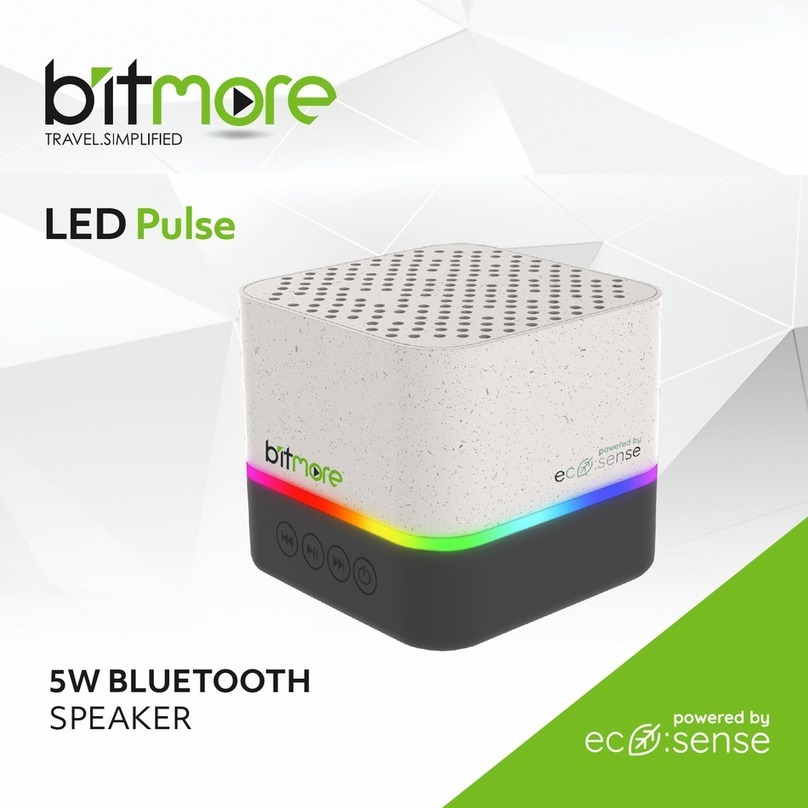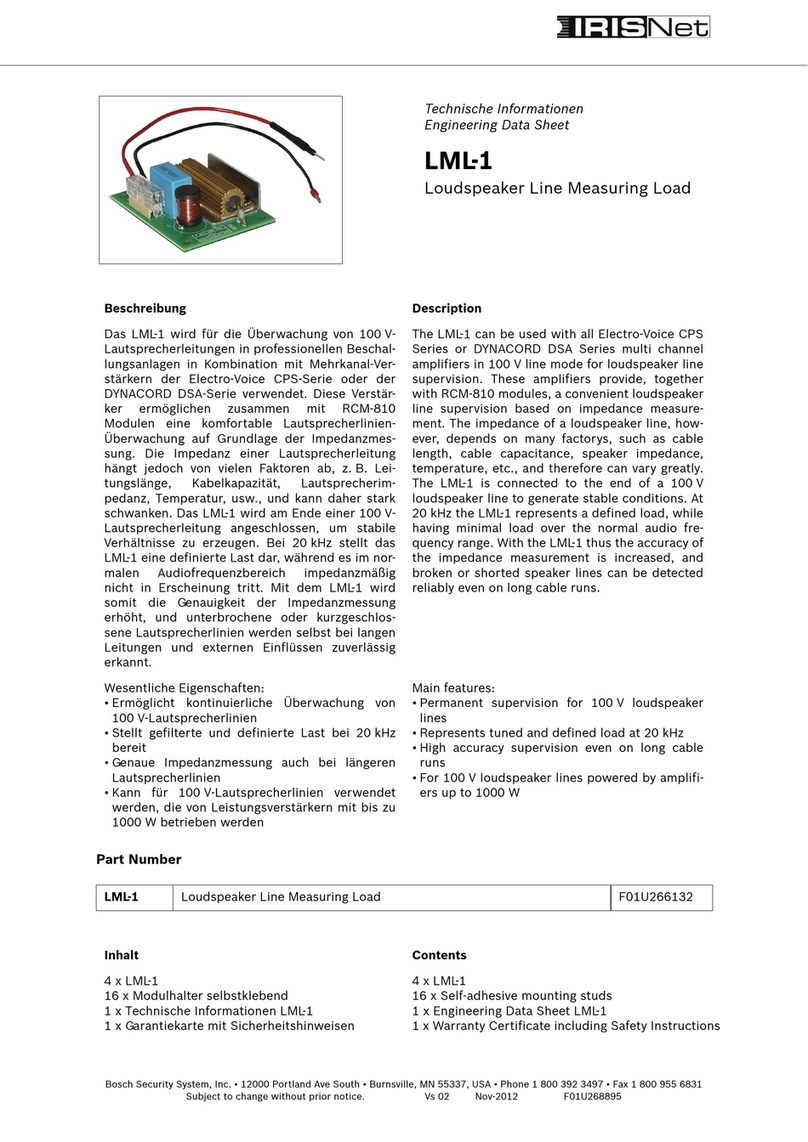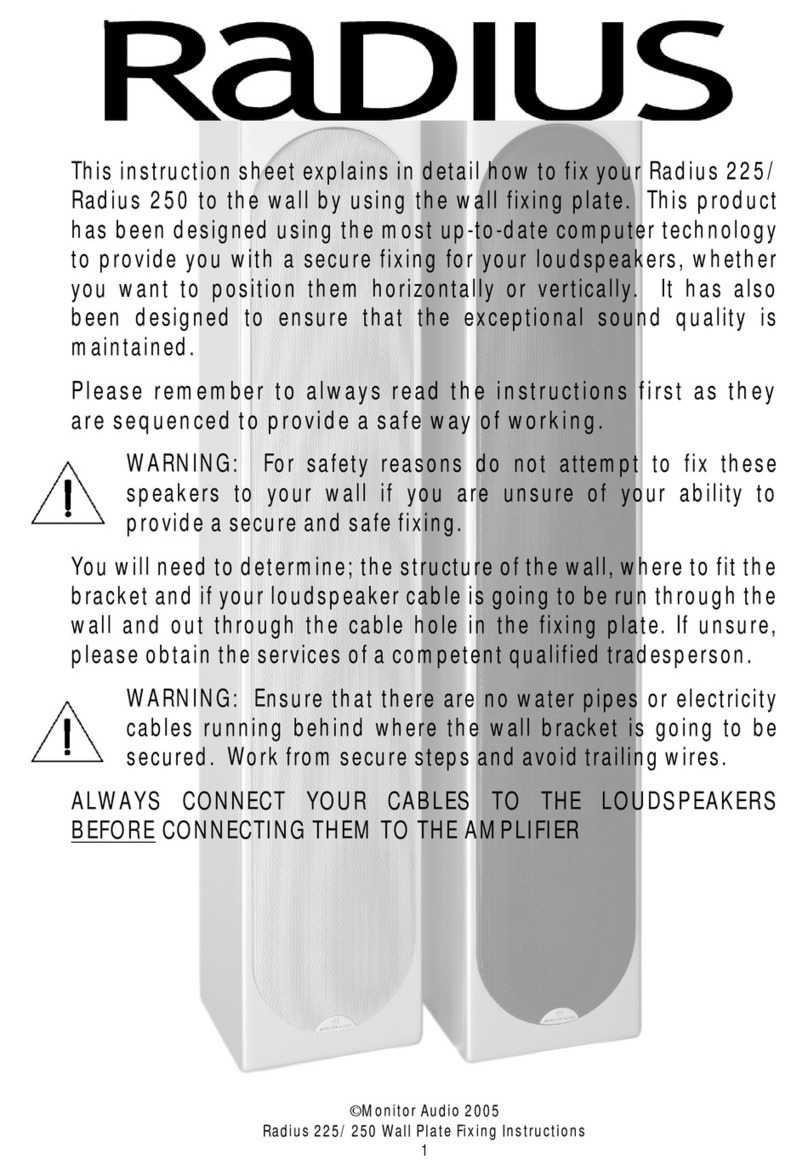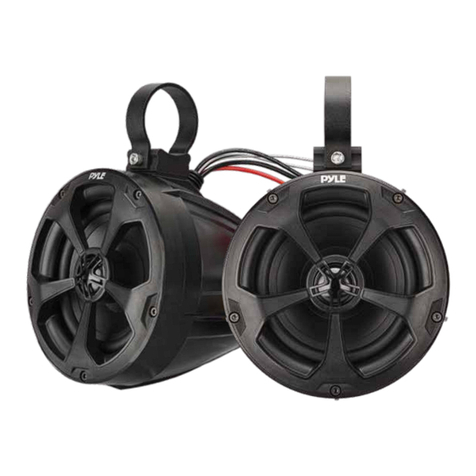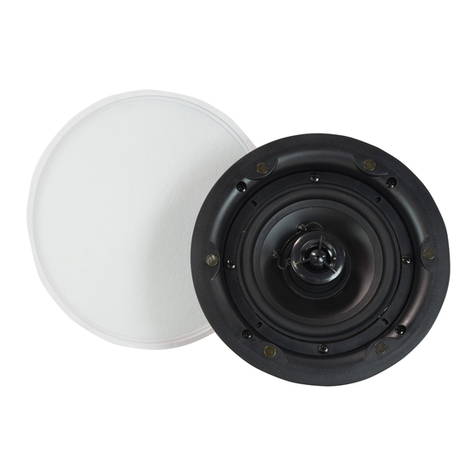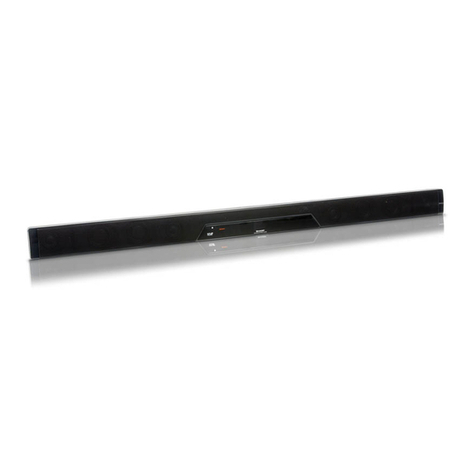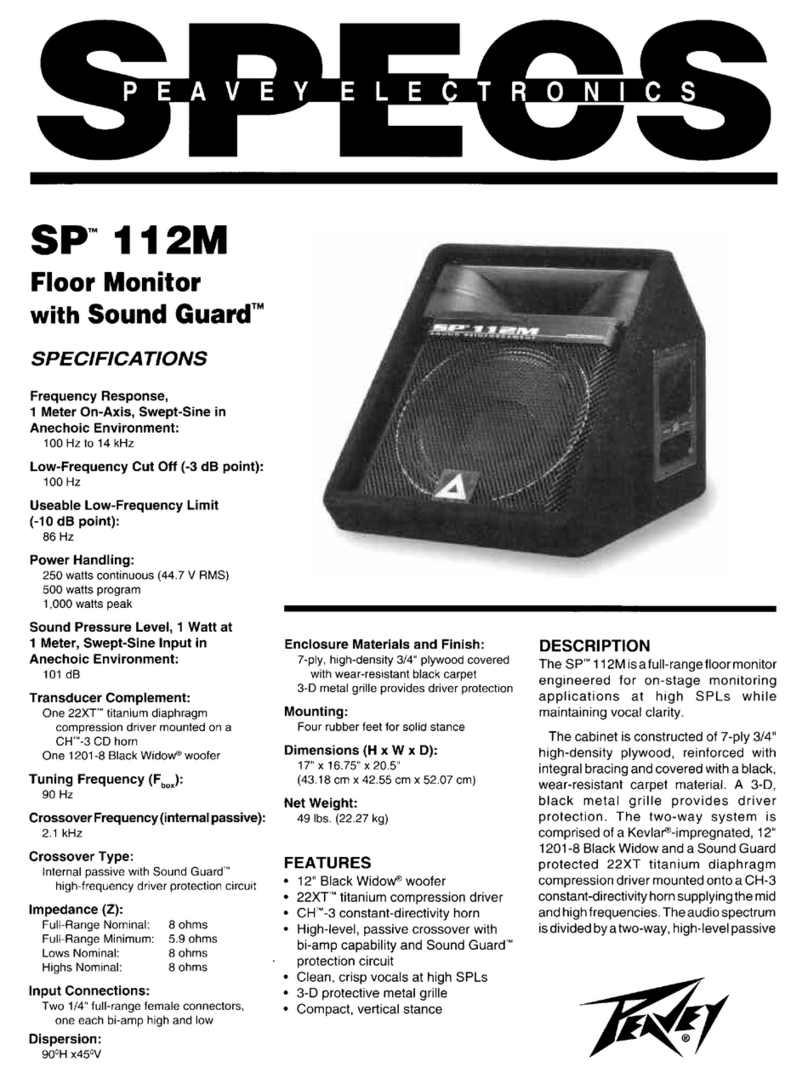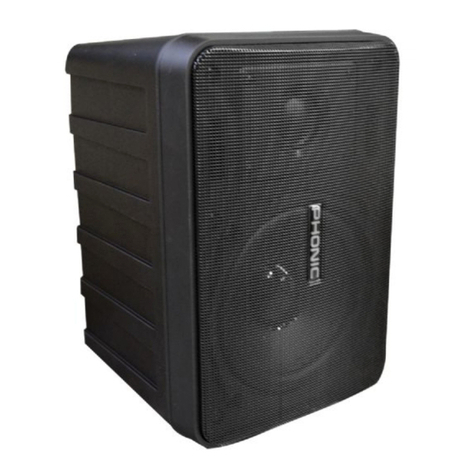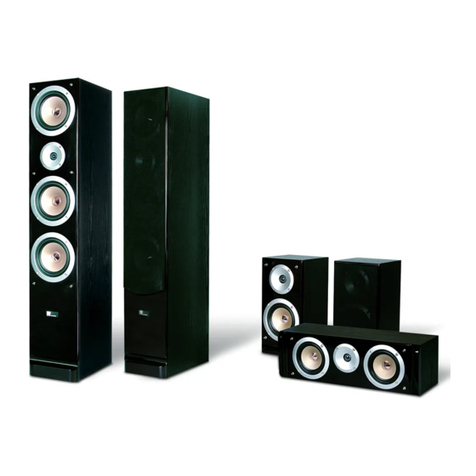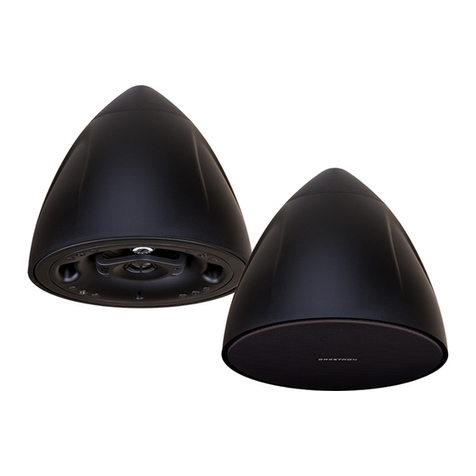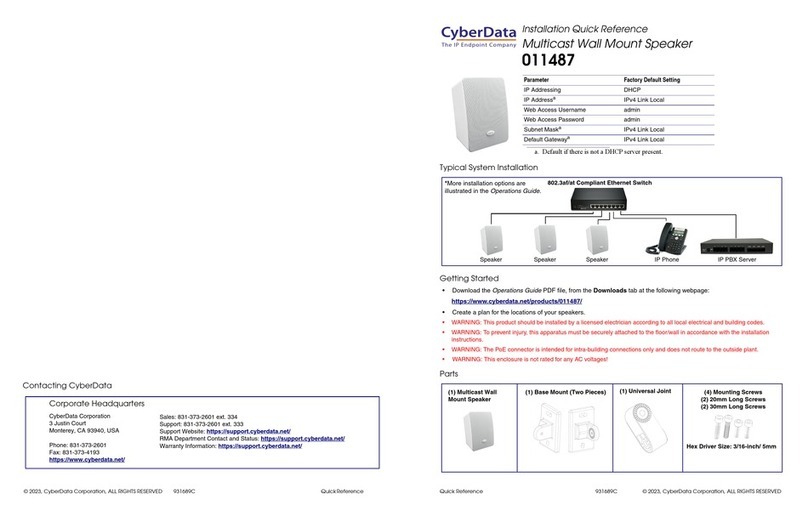
10K
Frequency
1K
10
5
0
-5
-10
-15
-20
-25
10020 20K
Amplitude — dB
10K
Frequency
1K
10
5
0
-5
-10
-15
-20
-25
10020 20K
Amplitude — dB
10K
Frequency
1K
10
5
0
-5
-10
-15
-20
-25
10020 20K
Amplitude — dB
On-axis
On-axis, octave averaged
30°, octave averaged
Frequency response
The graphs below show the frequency response of the CS2.3.
The upper graph shows the (normal) on-axis response and
illustrates the very high degree of accuracy; no frequency is
under or over emphasized more than 2 dB. You can also notice
the full strength bass extension to 35 Hz.
The second graph shows the on-axis, octave-averaged
response. This curve is representative of the speaker’s tonal
balance and shows that the CS2.3 is very accurately balanced
with no area of the spectrum over or under emphasized more
than 0.5 dB.
The third graph shows the off-axis, octave averaged response
and illustrates that the speaker’s overall energy response into the
room is well balanced, with no large depressions in any area of
the spectrum. This high degree of uniformity is the result of the
CS2.3’s first order crossover system.
Time – msec
0.5
5
0
-5
-10
-15
-20
-25
-30
-35
1.0
Output — dB
1.5 2.0 2.5
Time – msec
0.5 1.0
Output
1.5 2.0 2.5
Step response
This graph shows the CS2.3’s response to a step signal. You can
notice that the overall triangular shape is very well preserved
with the output remaining smoothly positive until 2 ms when it
finally crosses due to the fact that the bass response extends to 35
Hz rather than DC. The irregularities seen in the first 100 or so
microseconds are due to the tweeter diaphragm resonance at the
ultrasonic frequency of about 23 kHz. Waveshape accuracy this
good can only be achieved with first order crossovers and time
coherent driver positioning.
Time response
The energy-time response of the CS2.3 shows that the speaker’s
output quickly decays to -40 dB in less than one millisecond,
demonstrating very clean inter-transient silence. This
performance is the result of metal diaphragms with no
resonances within their operating frequency range and very
strong cabinet construction.
Mechanical crossover
midrange
cone
voice
coil
tweeter
dome coupling
suspension
midrange
suspension
Moving system
10K
Frequency
1K
10
5
0
-5
-10
-15
-20
-25
10020 20K
Amplitude — dB
Combined output
Tweeter Midrange
Compound driver
The most unusual technical feature of the CS2.3 is its use of a
compound driver where the tweeter dome and the midrange cone
are both driven by a single voice coil. The advantages of this
unique driver are that perfectly time-coherent performance is
achieved without the cost and complexity of two magnet
structures or an electrical crossover network for the mid-to-
tweeter transition. The design is implemented with a mechanical
crossover—a “coupling” suspension between the coil and the
midrange cone. By optimizing the compliance and damping of
the coupling suspension and the ratios of area and mass of the
two diaphragms, the driver exhibits extremely uniform response
from 100 Hz to 20 kHz.

